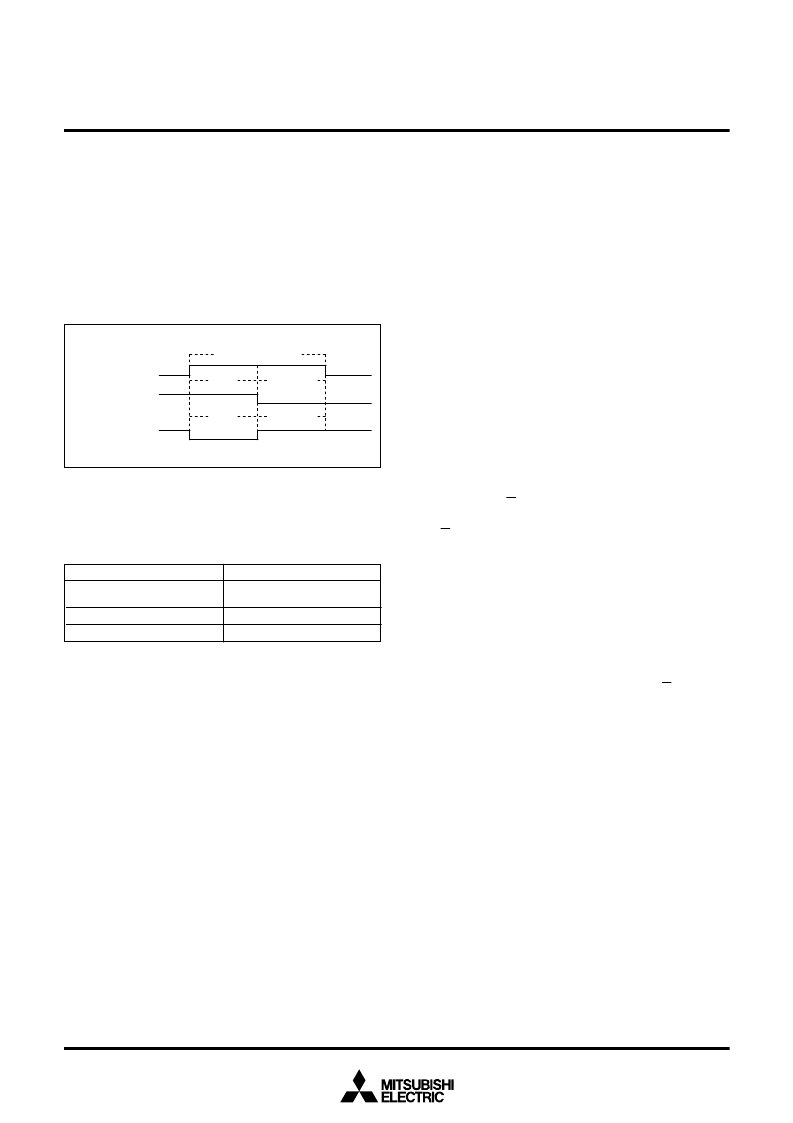- 您現(xiàn)在的位置:買賣IC網(wǎng) > PDF目錄370841 > M37212M6 (Mitsubishi Electric Corporation) Single Chip 8 Bits Microcomputer(8位單片機(jī)) PDF資料下載
參數(shù)資料
| 型號: | M37212M6 |
| 廠商: | Mitsubishi Electric Corporation |
| 英文描述: | Single Chip 8 Bits Microcomputer(8位單片機(jī)) |
| 中文描述: | 單芯片8位單片機(jī)(8位單片機(jī)) |
| 文件頁數(shù): | 40/119頁 |
| 文件大小: | 1308K |
| 代理商: | M37212M6 |
第1頁第2頁第3頁第4頁第5頁第6頁第7頁第8頁第9頁第10頁第11頁第12頁第13頁第14頁第15頁第16頁第17頁第18頁第19頁第20頁第21頁第22頁第23頁第24頁第25頁第26頁第27頁第28頁第29頁第30頁第31頁第32頁第33頁第34頁第35頁第36頁第37頁第38頁第39頁當(dāng)前第40頁第41頁第42頁第43頁第44頁第45頁第46頁第47頁第48頁第49頁第50頁第51頁第52頁第53頁第54頁第55頁第56頁第57頁第58頁第59頁第60頁第61頁第62頁第63頁第64頁第65頁第66頁第67頁第68頁第69頁第70頁第71頁第72頁第73頁第74頁第75頁第76頁第77頁第78頁第79頁第80頁第81頁第82頁第83頁第84頁第85頁第86頁第87頁第88頁第89頁第90頁第91頁第92頁第93頁第94頁第95頁第96頁第97頁第98頁第99頁第100頁第101頁第102頁第103頁第104頁第105頁第106頁第107頁第108頁第109頁第110頁第111頁第112頁第113頁第114頁第115頁第116頁第117頁第118頁第119頁

40
SINGLE-CHIP 8-BIT CMOS MICROCOMPUTER for VOLTAGE SYNTHESIZER
with ON-SCREEN DISPLAY CONTROLLER
M37212M4/M8–XXXSP, M37212M6–XXXSP/FP
M37212EFSP/FP
MITSUBISHI MICROCOMPUTERS
Rev. 1.0
8.6.8 START/STOP Condition Detect Conditions
The START/STOP condition detect conditions are shown in
Figure 8.6.11 and Table 8.6.3. Only when the 3 conditions of Table
8.6.3 are satisfied, a START/STOP condition can be detected.
Note:
When a STOP condition is detected in the slave mode
(MST = 0), an interrupt request signal “IICIRQ” is generated to the
CPU.
Fig. 8.6.11 START Condition/STOP Condition Detect Timing Dia-
gram
Standard Clock Mode
6.5
μ
s (26 cycles) < SCL
release time
3.25
μ
s (13 cycles) < Setup time
3.25
μ
s (13 cycles) < Hold time
High-speed Clock Mode
1.0
μ
s (4 cycles) < SCL
release time
0.5
μ
s (2 cycles) < Setup time
0.5
μ
s (2 cycles) < Hold time
Table 8.6.3 START Condition/STOP Condition Detect Conditions
Note:
Absolute time at
φ
= 4 MHz. The value in parentheses denotes the num-
ber of
φ
cycles.
H
o
l
d
t
i
m
e
S
e
t
S
t
t
u
e
p
i
m
S
C
L
S
T
(
D
c
A
o
S
T
A
R
n
d
i
t
i
o
n
)
S
D
c
A
n
(
S
T
O
P
o
d
i
t
i
o
n
)
S
C
L
r
e
l
e
a
s
e
t
i
m
e
H
o
l
d
t
i
m
e
t
u
e
p
i
m
8.6.9 Address Data Communication
There are two address data communication formats, namely, 7-bit
addressing format and 10-bit addressing format. The respective ad-
dress communication formats is described below.
(1) 7-bit addressing format
To meet the 7-bit addressing format, set the 10BIT SAD bit of the I
2
C
control register (address 00DA
16
) to “0.” The first 7-bit address data
transmitted from the master is compared with the high-order 7-bit
slave address stored in the I
2
C address register (address 00D8
16
).
At the time of this comparison, address comparison of the RBW bit of
the I
2
C address register (address 00D8
16
) is not made. For the data
transmission format when the 7-bit addressing format is selected,
refer to Figure 8.6.12, (1) and (2).
(2) 10-bit addressing format
To meet the 10-bit addressing format, set the 10BIT SAD bit of the
I
2
C control register (address 00DA
16
) to “1.” An address comparison
is made between the first-byte address data transmitted from the
master and the 7-bit slave address stored in the I
2
C address register
(address 00D8
16
). At the time of this comparison, an address com-
parison between the RBW bit of the I
2
C address register (address
00D8
16
) and the R/W bit which is the last bit of the address data
transmitted from the master is made. In the 10-bit addressing mode,
the R/W bit which is the last bit of the address data not only specifies
the direction of communication for control data but also is processed
as an address data bit.
When the first-byte address data matches the slave address, the
AAS bit of the I
2
C status register (address 00D9
16
) is set to “1.” After
the second-byte address data is stored into the I
2
C data shift register
(address 00D7
16
), make an address comparison between the sec-
ond-byte data and the slave address by software. When the address
data of the 2nd bytes matches the slave address, set the RBW bit of
the I
2
C address register (address 00D8
16
) to “1” by software. This
processing can match the 7-bit slave address and R/W data, which
are received after a RESTART condition is detected, with the value
of the I
2
C address register (address 00D8
16
). For the data transmis-
sion format when the 10-bit addressing format is selected, refer to
Figure 8.6.12, (3) and (4).
相關(guān)PDF資料 |
PDF描述 |
|---|---|
| M37212M8 | Single Chip 8 Bits Microcomputer(8位單片機(jī)) |
| M37212EFSP | Single Chip 8 Bits Microcomputer(8位單片機(jī)) |
| M37212M4-XXXSP | SINGLE-CHIP 8-BIT CMOS MICROCOMPUTER for VOLTAGE SYNTHESIZER |
| M37212M8-XXXSP | SINGLE-CHIP 8-BIT CMOS MICROCOMPUTER for VOLTAGE SYNTHESIZER |
| M37221M6-054SP | SINGLE-CHIP 8-BIT CMOS MICROCOMPUTER for VOLTAGE SYNTHESIZER |
相關(guān)代理商/技術(shù)參數(shù) |
參數(shù)描述 |
|---|---|
| M37212M6-XXXFP | 制造商:RENESAS 制造商全稱:Renesas Technology Corp 功能描述:SINGLE-CHIP 8-BIT CMOS MICROCOMPUTER for VOLTAGE SYNTHESIZER with ON-SCREEN DISPLAY CONTROLLER |
| M37212M6-XXXSP | 制造商:RENESAS 制造商全稱:Renesas Technology Corp 功能描述:SINGLE-CHIP 8-BIT CMOS MICROCOMPUTER for VOLTAGE SYNTHESIZER with ON-SCREEN DISPLAY CONTROLLER |
| M37212M6-XXXSP/FP | 制造商:MITSUBISHI 制造商全稱:Mitsubishi Electric Semiconductor 功能描述:SINGLE-CHIP 8-BIT CMOS MICROCOMPUTER for VOLTAGE SYNTHESIZER |
| M37212M8-XXXSP | 制造商:RENESAS 制造商全稱:Renesas Technology Corp 功能描述:SINGLE-CHIP 8-BIT CMOS MICROCOMPUTER for VOLTAGE SYNTHESIZER with ON-SCREEN DISPLAY CONTROLLER |
| M37220M3 | 制造商:RENESAS 制造商全稱:Renesas Technology Corp 功能描述:SINGLE-CHIP 8-BIT CMOS MICROCOMPUTER for VOLTAGE SYNTHESIZER with ON-SCREEN DISPLAY CONTROLLER |
發(fā)布緊急采購,3分鐘左右您將得到回復(fù)。